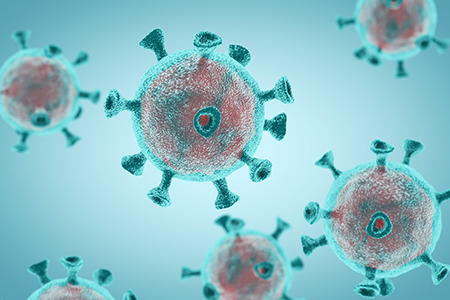Children's Emergency Department is now located in Children's Tower: 1001 E. Marshall Street.
Learn more
What exactly does care look like for patients, whether at home or in the hospital? Dr. Mark Marinello, medical director of our pediatric intensive care unit, answers some of our top questions.
 Although this specific coronavirus is new, doctors are familiar with treating illnesses with similar symptoms that attack the lungs, including serious cases of the flu and pneumonia.
Although this specific coronavirus is new, doctors are familiar with treating illnesses with similar symptoms that attack the lungs, including serious cases of the flu and pneumonia.
Currently, there's no specific drug known to kill this virus, so health care providers are primarily delivering supportive care aimed at relieving symptoms and keeping vital organ systems functioning while the body fights the infection and heals.
With mild symptoms – fever, cough, muscle aches – supportive care can likely be done at home and consist of:
Learn more about the symptoms of COVID-19
The virus causes inflammation and swelling in the lung tissue and lower airways, which can lead to coughing and sometimes shortness of breath. People who develop shortness of breath and require oxygen likely need to be admitted to the hospital. Supportive care in the hospital includes monitoring vitals such as temperature, blood pressure and oxygen levels and doing what is needed to keep them as normal as possible. This might include:
There is a lot of research being done to determine the best strategies to kill the virus and treat the disease. VCU Medical Center has begun offering convalescent plasma treatment, a process that uses the plasma of people who have recovered from COVID-19, which has antibodies to the novel virus, to treat people who are seriously ill. This process is similar to a blood transfusion.
There are also multiple studies underway to look for a specific medicine to treat this virus, as well as efforts to develop a vaccine.
Children are being infected with COVID-19, however their symptoms are not as severe as those seen in adults. There are several theories – although none has been proven yet. One is that children are often infected with a variety of strains of coronavirus and perhaps their immune systems are more prepared for it.
Another, and more likely, theory is that children do not have a receptor that the COVID-19 virus likes to attach to. As a result, the immune system does not overreact to it, which is what causes the serious symptoms that lead to lung failure.
Our PICU has been actively preparing for COVID-19 for the past several months. We have taken a number of measures to ensure we are ready to safely care for all patients who need us, both those with COVID-19 and those who need care for other severe illnesses or injuries.
These measures include: